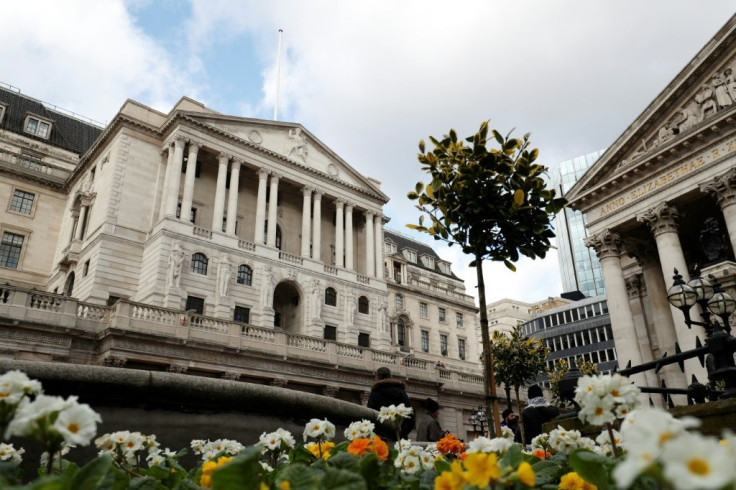Below Zero: Bank of England Official Suggests Negative Interest Rates Are Possible

KEY POINTS
- The BoE’s Monetary Policy Committee held the rate at an all-time low of 0.1% last Thursday.
- Chicago Fed President Charles Evans said he did not think zero rates would occur in the U.S
- The federal funds rate is currently in a range of between zero and 0.25%
The Bank of England’s Deputy Governor for Monetary Policy Ben Broadbent said it is possible the U.K. central bank may push interest rates into negative territory.
“We keep under review all our potential policy tools and this [pushing rates below zero] is a question that’s been thought about on and off since the financial crisis and it’s a balanced judgment,” Broadbent told CNBC on Tuesday.
The BoE’s Monetary Policy Committee has cut its benchmark lending rates twice from 0.75% since the coronavirus pandemic began and elected to hold the rate at an all-time low of 0.1% last Thursday.
BoE has also raised its bond-buying program to £645 billion ($795 billion) to help bolster the British economy.
“The committee are certainly prepared to do what is necessary to meet our [task] with risks still to the downside,” Broadbent said. “Yes, it is quite possible that more monetary easing [from current historic lows] will be needed over time.”
Reducing interest rates below may stimulate demand but would hurt banks’ profitability.
“These are the balanced questions the committee has to think about and ... has been thinking about for the past decade,” Broadbent said.
Broadbent noted the current low level of interest rates was partly based on the assessment of banks and construction companies having stronger balance sheets than they did after the global financial crisis in 2008-2009.
He also encouraged U.K. banks to keep lending.
Broadbent also agreed with BoE Governor Andrew Bailey’s remarks that the supply of credit should be increased.
“There was a great need for companies to be able to bridge themselves through this [pandemic] with all the support that can be provided both by the government and by the banks,” he said.
But Broadbent cautioned that the BOE’s quantitative easing program is not designed to finance the government’s fiscal response to the pandemic.
“It is not surprising when you have a huge hit to the economy, as is the case now, as was the case in 2009, that you see easing on both fiscal and monetary fronts,” he said. “That is the connection — they are both responses to a weaker economy. It is not the case that one is a response to the other.”
With negative interest rates, lenders essentially are charged to keep cash at the central bank, which lowers their profits.
BoE has historically resisted negative interest rates. The central bank could potentially use other tools to prop up the economy – namely, purchasing more bonds, mostly government debt.
In the U.S., Federal Reserve officials have scoffed at the notion of negative rates. (The federal funds rate is currently in a range of between zero and 0.25%)
Chicago Fed President Charles Evans said he did not think zero rates would occur in the U.S.
“We must do all we can so that economic activity can resume once it is safe to do so and focus our efforts on returning to prosperity as quickly as possible,” Evans told a meeting of the Lansing Chamber of Commerce, adding that rates will remain near zero for “quite some time.”
Regarding negative interest rates, Evans said: “I don’t anticipate it being a tool that we would be using in the U.S.”
St. Louis Fed President James Bullard said that since the structure of short-term funding markets in the U.S. differs from those in Japan and Europe [where negative rates have been tried with mixed results], negative rates in the U.S. would be “problematic.”
“It is not at all clear that they’ve been successful there [in Japan, Europe]; we can use other tools to handle the situation,” Bullard said.
Atlanta Fed President Raphael Bostic also assailed the notion, citing that negative interest rates are “among the weaker tools in the toolkit.”
“I am not a big fan of going into the negative rate territory,” Bostic said.
Last November, Fed Chairman Jerome Powell told Congress that pushing rates below zero “would certainly not be appropriate.”
“We do not see negative policy rates as likely to be an appropriate policy response here in the U.S.,” Powell reiterated on Mar. 15.
But some other analysts think the Fed may eventually cut rates below zero.
Paul Ashworth, Chief North American Economist at Capital Economics, wrote on Monday that the Fed has “developed a habit of caving in the face of market pressure in recent years,” adding that while the Fed will probably steer clear of negative rates, “we are wary of dismissing the possibility entirely.”
Kenneth Rogoff, professor of economics and public policy at Harvard University, has called on the Fed to cut rates below zero.
“Negative rates would lift many firms, states, and cities from default,” Rogoff wrote. “If done correctly – and recent empirical evidence increasingly supports this – negative rates would operate similarly to normal monetary policy, boosting aggregate demand and raising employment.”
© Copyright IBTimes 2025. All rights reserved.





















